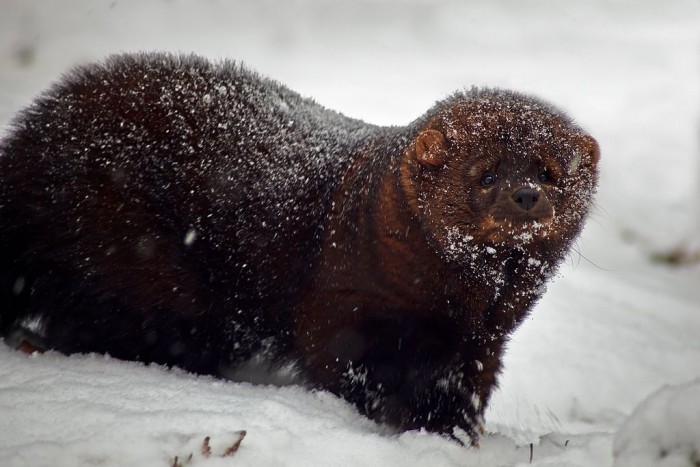Marijuana Farms Harm Fishers
Fishers in Northern California were five times more likely to die from poisoning than predation compared to fishers in the southern Sierra Nevada.

Fishers are cat-sized, relatively rare, forest-dwelling relatives of the weasel family. In California, they are increasingly becoming innocent victims of illegal marijuana farms on public and tribal lands. A study recently published in PLoS ONE has found that poisoning deaths of fishers, caused by ingesting rat poison used on these farms, have risen by a massive 233% compared to a study in 2012.
A team of researchers from the US Forest Service, Integral Ecology Research Centre, some universities in California and partner organisations conducted the new study from 2007 to 2014 at three research sites, one in Northern California and two in the southern Sierra Nevada. At all three locations, fishers were captured in humane box traps and fitted with radio collars in order to collect information on habitat use and survival rate. The researchers tracked the animals and were able to retrieve their carcasses when the collars indicated that the animal had died. In total, they examined the deaths of 167 fishers – cause of death could be determined in 129 of them. Predation accounted for 70%, mostly by their primary predators bobcats (40%), mountain lions (38%) and coyotes (6%). Natural disease accounted for 16%, and vehicular strike and human causes both accounted for 2% each. Poisoning accounted for 10% of deaths.
Fishers in Northern California were five times more likely to die from poisoning than predation compared to fishers in the southern Sierra Nevada. Overall, male fishers were 13 times more likely to die of poisoning than predation compared to females. This is potentially due to the large movements made by males during the spring breeding season, the peak time at which marijuana growers’ use rodenticide. Eighty-five percent of fishers showed exposure to rat poison and the animals were, on average, exposed to multiple types of poison.
“We know that a 10 percent change in mortality rate is enough to determine whether fishers in California are able to expand their population size or not,” says Dr Craig Thompson, a research wildlife ecologist and one of the study’s authors. “Now we know that rodenticide poisoning alone is enough to keep fisher populations suppressed in the state, even without accounting for the fact that low doses of these poisons also cause the animals to be lethargic and susceptible to disease, which in turn increases the potential for other sources of mortality.”
The US Fish and Wildlife Service recently proposed to list fishers in the states of California, Washington and Oregon as threatened under the US Endangered Species Act. The California Department of Fish and Wildlife has already listed fishers in the southern Sierra Nevada as threatened under the California Endangered Species Act.
“This study further solidifies the need for continuing to remediate and remove these threats to fishers and other species of conservation concern within our public lands,” says Dr Mourad Gabriel, executive director of the Integral Ecology Research Centre and the study’s lead author. “I hope the next steps can focus on rectifying the harmful effects of this clandestine activity so that they do not stem the years of conservation efforts of stabilising the California fisher populations.”





No comments yet.